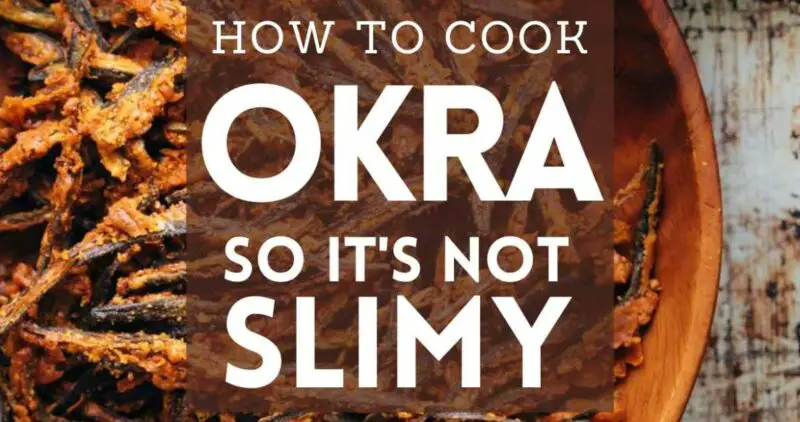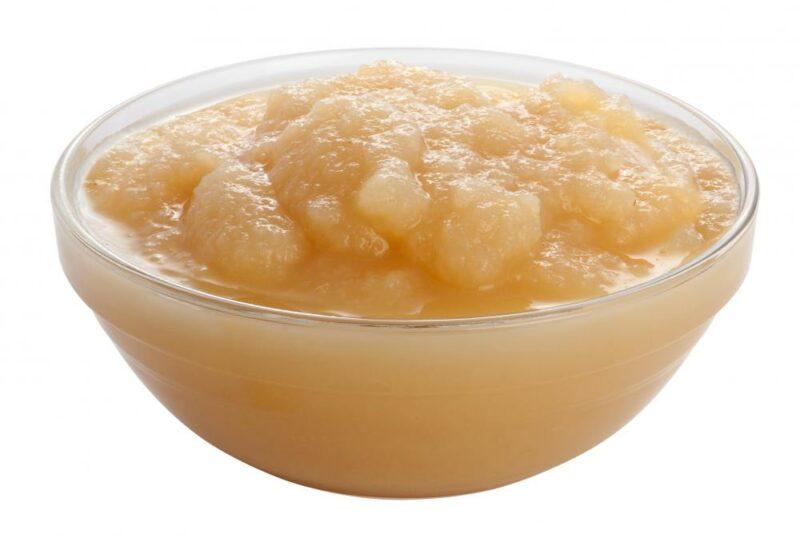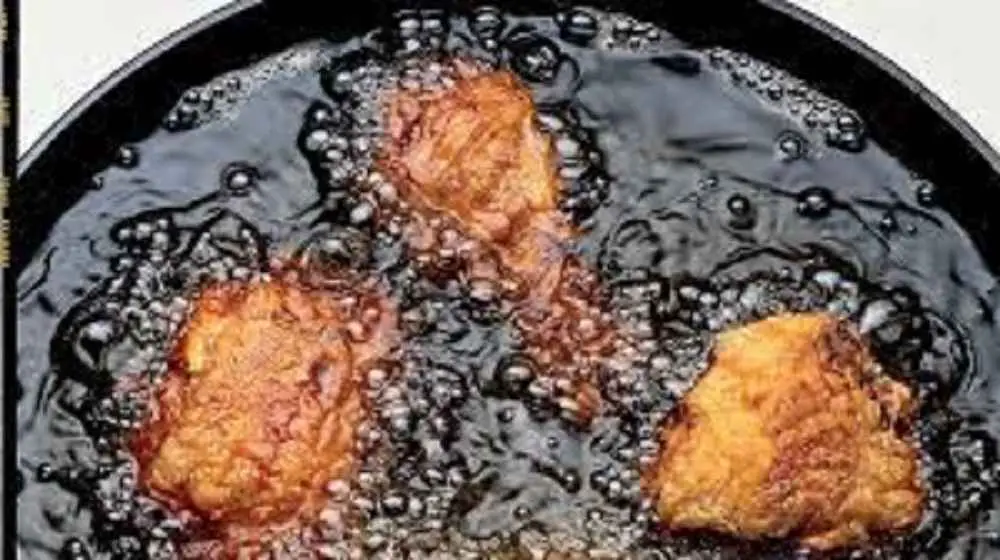Frozen okra can be a fantastic addition to any meal, offering plenty of nutrients and flavor. However, the slime that is produced when okra is cooked can turn some people off. If you’re wondering how to cook frozen okra without the slime, don’t worry – we’ve got you covered. In this guide, we will explore the causes of okra slime and various cooking techniques that can help reduce it.
## What Causes Okra Slime?
Before diving into cooking techniques, it’s essential to understand what causes the slime on okra. Okra contains a type of sugar called mucilage, which acts as a thickening agent when heated. When this mucilage gets released during cooking, the result is slimy okra.
It’s important to note that not all okra produces the same amount of slime. The younger and fresher the okra is, the less mucilage it contains. Therefore, selecting fresh and young okras can significantly minimize slime production.
## Tips for Preparing Frozen Okra
Before diving into cooking methods, we must first discuss the proper way to prepare frozen okra. Here are some tips to help defrost your frozen okra:
### Defrosting Methods
– The recommended way to defrost frozen okra is by placing it in the refrigerator overnight.
– You can also microwave frozen okra by placing it in a microwave-safe dish and microwaving at 50% power for a few minutes until thawed.
### Temperature and Environment Considerations
– Avoid thawing frozen okra at room temperature, as this can cause bacteria to grow.
– Keep your defrosting environment clean by wiping down surfaces with disinfectant before and after defrosting.
## Cooking Techniques That Reduce Okra Slime
Now that we’ve covered the basics let’s dive into various cooking techniques that can help reduce slime production in frozen okras.
### Blanching
Blanching is a technique where food is briefly cooked in boiling water and then plunged immediately into ice water to stop the cooking process. Here’s how to blanch frozen okra:
1. Bring a large pot of salted water to boil.
2. Add frozen okra to the pot and cook for 2-3 minutes.
3. Using a slotted spoon, remove the okra from boiling water and transfer it to a bowl of ice water for about 30 seconds.
4. Drain the cooled okra and pat dry with paper towels.
Blanching not only helps reduce slime production but also locks in nutrients and brightens the color of your okra.
### Baking in Oven
Baking in the oven is an easy method that can help reduce slime production in okra. Here’s how to do it:
1. Preheat your oven to 425 degrees Fahrenheit.
2. Place frozen okra onto a baking sheet lined with parchment paper.
3. Drizzle with olive oil and sprinkle with salt, pepper, and any additional seasonings of your choice.
4. Bake in the oven for 15-20 minutes, flipping halfway through.
Oven-baked frozen okra is crispy on the outside while still being tender on the inside, making it a delicious side dish or snack.
### Pan-Frying
Pan-frying is a classic way to cook okra, and it can also help reduce slime production when done correctly. Here are some tips for pan-frying frozen okra:
1. Heat up some oil in a skillet over medium heat.
2. Add your thawed or partially thawed frozen okra to the skillet.
3. Cook for 10-15 minutes, stirring occasionally.
4. Remove from heat and let cool before serving.
The key to reducing slime production when pan-frying frozen okra is to do so over low or medium heat rather than high heat. Also, avoid stirring too frequently, as this can cause okra to break down and release more mucilage.
## Alternative Ways to Cook Frozen Okra
If you’re looking for more variety in your cooking, here are some alternative ways to cook frozen okra:
### Grilling
Grilling frozen okra creates a smoky flavor that pairs perfectly with charred meats or kabobs. Here’s how to grill frozen okra:
1. Preheat your grill to medium-high heat.
2. Brush the thawed or partially thawed okra with oil and season with salt and pepper.
3. Place the okra directly on the grill grates and cook for 3-4 minutes per side.
Grilled frozen okras make a delicious side dish or appetizer.
### Stir-Fry
Stir-frying is another fantastic way to reduce slime production in okra. Here’s how to stir-fry frozen okra:
1. Heat up some oil in a wok or skillet over high heat.
2. Add your thawed or partially thawed frozen okra, along with other vegetables like bell pepper, onion, and garlic.
3. Stir-fry for 5-7 minutes until the vegetables are tender.
4. Season with soy sauce and other seasonings of your choice before serving.
Stir-fried frozen okra is a quick and easy way to add more greens into your diet.
### Slow-Cooker Method
Slow-cooker method involves cooking the food at a low temperature over an extended period until it becomes tender and flavorful. Here’s how to use a slow cooker for frozen okra:
1. Add the thawed or partially thawed frozen okra into a slow cooker, along with chicken broth or water.
2. Cook on low for 4-6 hours or high for 2-3 hours.
3. Season with salt, black pepper, and other seasonings of your choice before serving.
A slow-cooked meal can offer convenience and a great way to reduce slime without much fuss.
## Seasoning Recommendations and Recipes for Frozen OkraThat Minimize Slime Production
When it comes to seasoning frozen okra that minimizes slime production, some of the best options include cumin, paprika, garlic powder, onion powder, and Cajun seasoning. Here are some recipes to try:
### Oven-Baked Okra
– Preheat your oven to 425 degrees Fahrenheit.
– Line baking sheet with parchment paper.
– Cut thawed okra into bite-sized pieces and toss them with olive oil, salt, pepper, garlic powder, and cumin.
– Spread the okra out on the baking sheet evenly.
– Bake for 17 minutes or until edges are crispy.
### Smoky Grilled Okra
– Preheat grill on medium-high.
– Pat dry thawed okra and toss with olive oil, smoked paprika and salt.
– Place the okra on a hot grill grate (over direct heat) and grill for 3-4 minutes per side or until slightly charred.
## Tips for Serving Cooked Frozen Okra
When serving cooked frozen okra, it’s essential to avoid breaking down the pods as this can cause more slime. Also, avoid overcrowding the okra on plates.
Keep your cooked okras warm in an oven (200°F) while you prepare other foods. If you plan to store cooked okras in a refrigerator for eating later in the week, make sure you place them in an airtight container.
## Conclusion
In conclusion, cooking frozen okra doesn’t have to be slimy. Understanding what causes slime is key to minimizing it. By using the techniques outlined here like blanching or baking in an oven: pan-frying can be done too without experiencing too much slime along with alternative cooking techniques like grilling, stir-frying, and slow-cooking; you can now prepare tasty okra dishes – free of slime – that everyone will enjoy!
Frequently Asked Questions
How can I cook frozen okra without the slime?
If you’re tired of being turned off by the slimy texture of frozen okra, fret not. There are a few ways to cook frozen okra without the slime. For starters, you can preheat a skillet over high heat and add a tablespoon of oil. Once hot, add the frozen okra and stir frequently to ensure even cooking. This method will produce crispy, non-slimy okra.
What else can I add to my frozen okra?
Feel free to add some extra flavors to your frozen okra. For instance, adding diced tomatoes, onions, and garlic can help spruce up your dish. You can also try seasoning with cumin, paprika, or chili powder for an added kick.
Can I cook my frozen okra in the oven?
Yes, you can bake your frozen okra in the oven for a healthy twist. Preheat your oven at 400°F and spread out the thawed okra on a baking sheet. Drizzle lightly with olive oil and season with preferred spices. Bake for around 30 minutes or until crispy and browned.
What other dishes can I make using frozen okra?
Frozen okra is incredibly versatile and can be used in various recipes like gumbo, soups or stews. Additionally, you can also try roasting or grilling it as a healthy side dish option at any mealtime.






